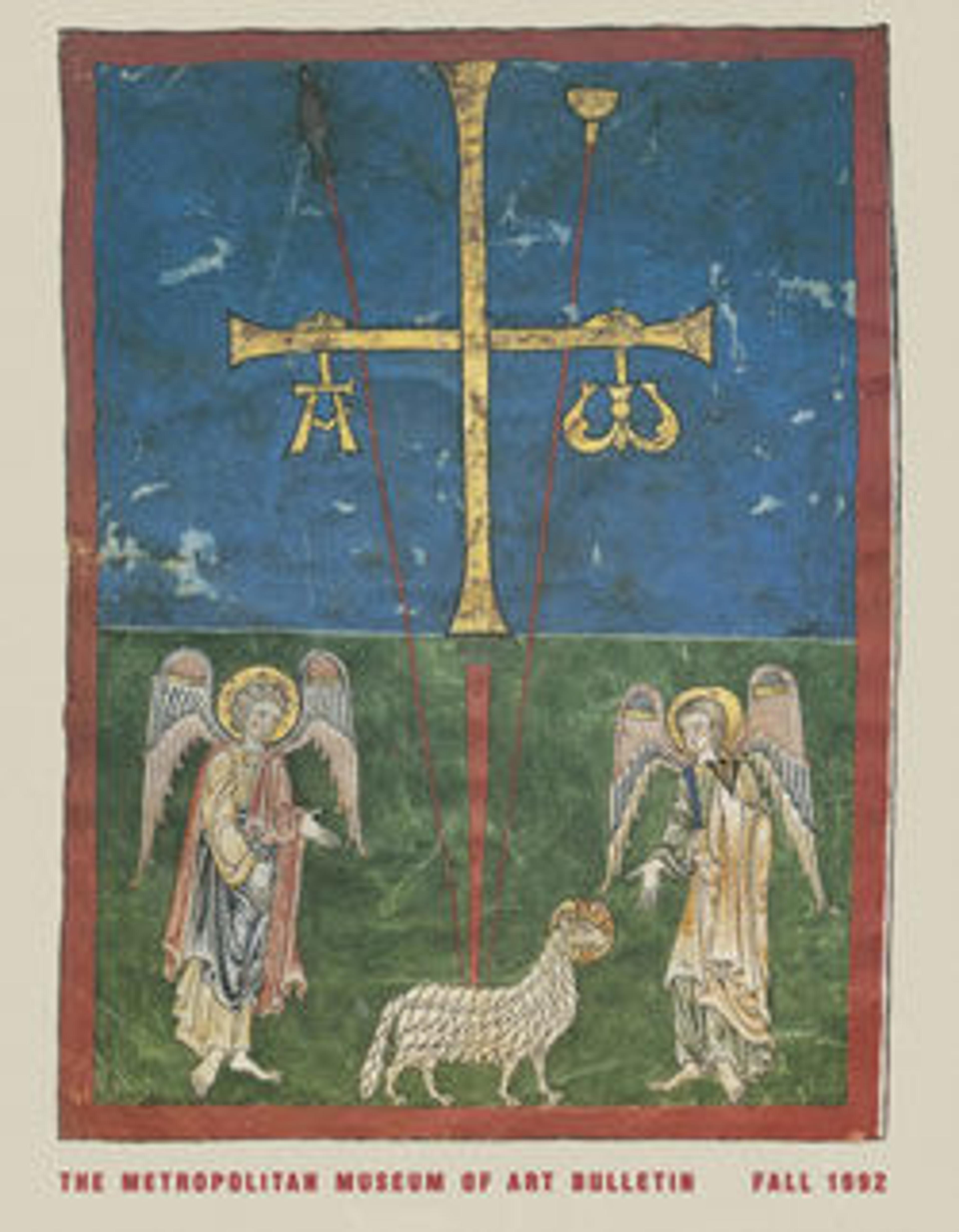Bottle with Snake
The ceramic stirrup-spout bottle was an important vessel among peoples on the Peruvian north coast from the second millennium B.C. onward. The globular chamber of this pleasing, well-proportioned bottle is shaped to accommodate the undulating body of a big serpent worked in relief on one half of the chamber. The reptile's large head has catlike eyes, whiskers, and a bifurcated tongue. A mythological creature known as the "eared" serpent may be depicted, as it often assumes feline characteristics such as whiskers and fangs. The serpent's body is outlined in white and decorated with concentric circles. The elegant arch of the spout, which could serve as a handle, thickens toward the juncture with the chamber, and from its center rises its short tapering end. The shape of the spout indicates an early date in the long ceramic sequence of the Moche. Snakes were common and depictions of them abound. Although their meaning is unclear, the annual shedding of their skins may have been symbols of renewal and regeneration.
Artwork Details
- Title: Bottle with Snake
- Date: 2nd–5th century
- Geography: Peru
- Culture: Moche
- Medium: Ceramic
- Dimensions: H. 8 3/4 × W. 5 7/8 × D. 5 7/8 in. (22.2 × 14.9 × 14.9 cm)
- Classification: Ceramics-Containers
- Credit Line: Gift of Conny and Fred Landmann, 1992
- Object Number: 1992.60.9
- Curatorial Department: The Michael C. Rockefeller Wing
More Artwork
Research Resources
The Met provides unparalleled resources for research and welcomes an international community of students and scholars. The Met's Open Access API is where creators and researchers can connect to the The Met collection. Open Access data and public domain images are available for unrestricted commercial and noncommercial use without permission or fee.
To request images under copyright and other restrictions, please use this Image Request form.
Feedback
We continue to research and examine historical and cultural context for objects in The Met collection. If you have comments or questions about this object record, please contact us using the form below. The Museum looks forward to receiving your comments.
